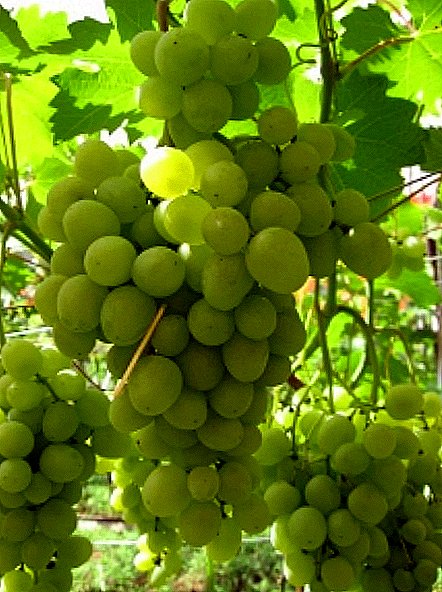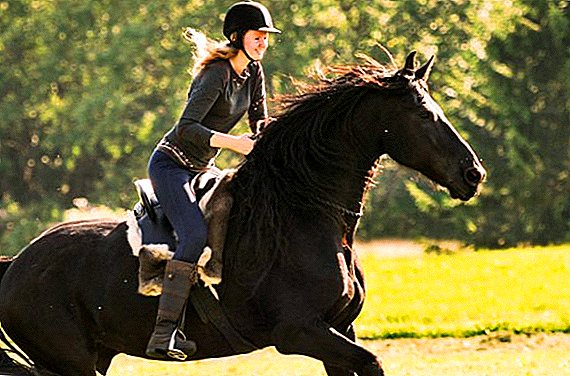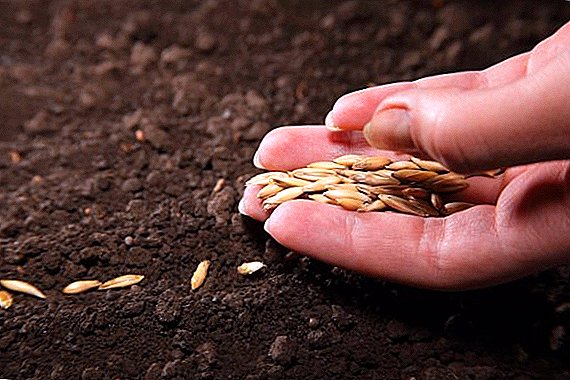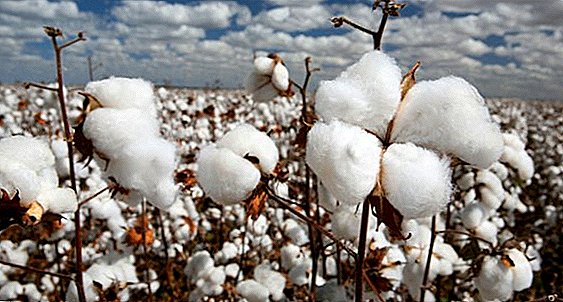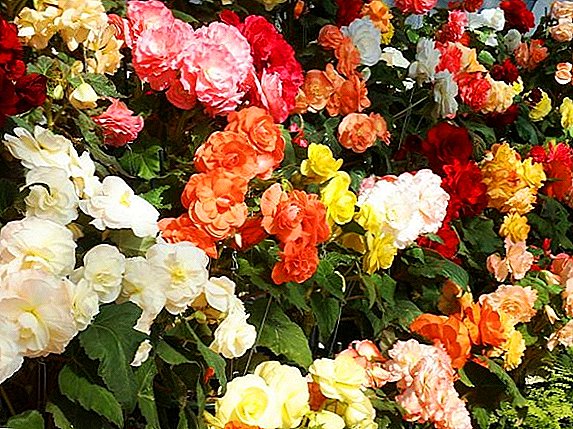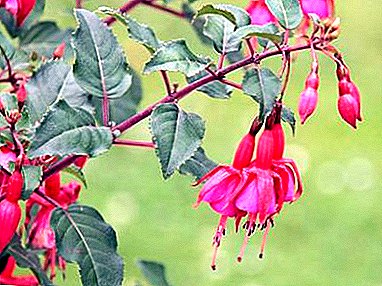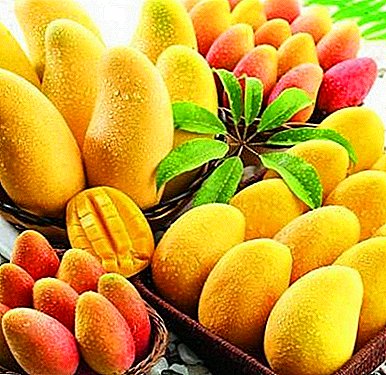 The fruits of the forest shrubs are a storehouse of substances necessary for the body to prevent seasonal beriberi.
The fruits of the forest shrubs are a storehouse of substances necessary for the body to prevent seasonal beriberi.
In order to preserve the beneficial properties of lingonberries, it is necessary to choose the most "vitamin" methods of its preparation for the winter.
Selection of berries for storage
The choice of conditions, how to store lingonberries at home, is yours.  But storage at room temperature, and in the cellar, and freezing require selected raw materials.
But storage at room temperature, and in the cellar, and freezing require selected raw materials.
- Collect (buy) lingonberries in September. The August harvest is not yet ripe.
- Pay attention to the bright red berry. This is a sign of ripeness and utility.
- Avoid dirty and crumpled fruit. Well kept only freshly picked berries.
Important! Make sure that the berries are collected in an ecologically clean place. Lingonberry, like many other forest fruits, strongly accumulates radiation.
Frost
Of all the recipes for preparing lingonberries for the winter without sugar and without cooking, freezing is the easiest and fastest way. To do this, sort the fruits, rinse in running water, and then dry.  Next, you need to pour the lingonberries in a bag and send it in the freezer. An hour later, get the bag and mix the contents. So do a couple of times in order not to freeze a solid com. Stored frozen lingonberries 2-4 months.
Next, you need to pour the lingonberries in a bag and send it in the freezer. An hour later, get the bag and mix the contents. So do a couple of times in order not to freeze a solid com. Stored frozen lingonberries 2-4 months.
Drying
For this method of procurement it is necessary to collect raw materials at the right time. As indicated above, the harvest season (purchase) of fruits in September, but the leaves need to be prepared in advance: in the spring, when the shrub is not yet flowering.
Both the fruits and the leaves after harvesting need urgently to be treated, otherwise the leaves will lose color and structure, and the fruits will have useful properties. 
Fruit
For the drying process will suit both the oven and dryer for fruit. At a temperature of 60 degrees and periodic stirring drying will be ready in a few hours. When the dryer has cooled, pour it into a jar and place it in a dark and dry place. The shelf life of dried fruit reaches 12 months.
Important! When drying the lingonberries in the oven, do not close the door tightly: this will help to prevent drying.
Leaves
Drying the leaves of lingonberries is done at room temperature or in a dryer. In the first case, the leaves should be decomposed on a dry surface in a room with good ventilation and from time to time turn them over.
It will take a couple of days. If the leaves are needed urgently, then you should use a dryer. Drying temperature should not exceed 40 degrees, and then the leaves will be ready in 5-6 hours. Paper bags or cardboard boxes are suitable storage containers. 
Water storage
Wet cranberries are stored in a proportion of 2.5 parts of water to 1 part of berries. Well washed fruits lay in a sterilized jar and pour boiled water. You should not close the container tightly; it is enough to cover it with parchment or gauze and put it in a dark place, occasionally pouring water. A week later, such a lingonberry will be ready for the winter.
Did you know? The famous cranberry water has a strong laxative effect. It was not for nothing that Evgeny Onegin was wary of her: "I am afraid that the cranberry water would not harm me."
Cranberries, ground with sugar
There are many recipes for making lingonberries for the winter with sugar. Consider the simplest of them - without cooking. With this method, one part of the berries takes two parts of sugar. First you need to chop the fruit in any convenient way.
Then add sugar and mix. Rubbed lingonberries with sugar should be left overnight under gauze, and the next morning roll up in sterilized jars and clean in the cold. You can complement the recipe by adding citrus zest or spices. 
Berry Drinks
Drinks with sourness not only refresh in the summer heat, but also heal in winter. Lingonberry compotes are especially useful for ARVI, and warming tinctures diversify winter holiday evenings. Consider cooking options for alcoholic and non-alcoholic lingonberry drinks.
When SARS is also recommended garlic, echinacea, pumpkin, rosehip, nettle, calendula, wormwood, irgu, tradescantia.
In own juice
Lingonberries in their own juice can be prepared by infusing the fruit in water for two weeks. It turns out the so-called "cranberry water." Also, the fruit can be cooked. For a three-liter jar you will need 4 cups of lingonberries and 1 cup of sugar. Such a drink is well stored without sterilization. 
Syrup
Lingonberry syrup is very easy to prepare: you can cook it from any number of berries. It is enough to squeeze the juice from the fruit and cook it over low heat, gradually adding sugar. The syrup is ready as soon as the mixture thickens.
Liquor
Based on 1 liter of vodka, you will need 5 glasses of berries and a pound of sugar. You can also add spices to your taste. Placing the fruit in a three-liter jar and filling them with vodka, leave to insist for three weeks.
After filtering the infusion, add a little water to the berries, drain, add sugar and bring to a boil, getting sugar syrup. Mix the syrup and berry tincture, pour the berries with the resulting liquid again and leave to infuse for another two weeks. 
Pouring
Pouring is the same liquor, but it does not require the preparation of sugar syrup. The proportions and time of the infusion may be very different, depending on the desired strength and saturation. But remember, the longer the tincture is maintained, the more pleasant the taste.
Learn about the intricacies of harvesting gooseberry, yoshta, bilberry, cranberry, black chokeberry, cornel, viburnum for the winter.
Wine
For this recipe, berries and water will be needed in a 1: 1 ratio. The technology of making lingonberry wine is quite simple: it is necessary to chop the berries through a meat grinder and dilute them with water. Covered mixture should be stored for a week at room temperature.
Next, pour the infused berries into brewed sugar syrup (1 kg of sugar per 2 liters of water). The resulting product should insist another month under the water seal. After a month, you need to drain the sediment and let it brew in a dark and cool place for about two months. 
Compote
The traditional recipe for classic cranberry compote remains:
- berries - 500 g;
- sugar - 500 g;
- water - 4 l.
- In a ceramic pot, bring the water and sugar to a boil.
- In the resulting syrup, boil the berries for 3-4 minutes.
- Let it brew, removing from the stove.
- Pour compote into sterilized containers and roll up.
- Turn upside down and wrap a blanket until cool.
Did you know? Bor is the favorite habitat for lingonberries; therefore, the common name of the berry is boronik.There is no less used recipe for lingonberry compote without sterilizing berries:
- berries - 400 g;
- sugar - 200 g;
- water - 2.5 l.
- Spread the berries evenly over the sterilized cans, pour boiling water over and leave for ten minutes.
- Drain the water from the cans, add sugar and prepare the syrup.
- Again, pour the berries already syrup and roll up.
- Wrap in a blanket to cool.

Cowberry Jam
The classic jam recipe is:
- lingonberry - 1.5 kg;
- sugar - 2 kg;
- water - 1.2 l.
- Rinse the berries with boiling water and drain them in a colander.
- Cook sugar syrup and pour them fruit.
- Simmer for half an hour.
- Pour on sterilized jars and clean to cool in a dark place.
- lingonberry - 1 kg;
- sugar - 750 g

Jelly and Marmalade
Lingonberry jelly is a refreshing and healthy dessert, which takes less time to prepare. Everything you need:
- lingonberry juice - 1 l;
- apple juice - 500 ml;
- sugar - 800 g
- Mix lingonberry and apple juice.
- Add sugar and boil down to about a third.
- Ensure that the fire was small. Ready dessert poured into a container and sterilized for 15-20 minutes.

Lingonberry marmalade:
- lingonberry - 1 kg;
- sugar - 400 g;
- water - 2-3 tbsp. spoons.
- Cook the fruits until they are soft.
- The resulting mass knead.
- Mix with sugar and let it dissolve.
- Boil until thick and cool.
- When the mass hardens, cut into cubes, put on a baking sheet and dry the marmalade to a crust at a temperature of 100 degrees.
- Roll in powdered sugar.
Important! If you are going to plant a lingonberry bush on your site, remember that it bears fruit only in the third year.Whatever method of harvesting lingonberries for the winter you choose, know that this berry lends itself well to long-term storage in any form. Moreover, having prepared fruits according to several recipes, you will receive different tastes and diversify your diet.


